|
Genres, Themes, Actors, and Directors:
- Biopics
- Greer Garson Films
- Margaret O’Brien Films
- Mervyn LeRoy Films
- Robert Walker Films
- Scientists
- Van Johnson Films
- Walter Pidgeon Films
Review:
In filming this biopic of Nobel Prize-winning scientist Marie Curie, MGM brought Greer Garson and Walter Pidgeon back together for their fourth of nine on-screen pairings — including, most famously, Mrs. Miniver (1942). They make a fine couple, and it’s surprisingly enjoying watching their lengthy (and most-unusual) “courtship”, with shy Pidgeon ultimately proposing in one of the most amusing such speeches I’ve heard:
“Whereas I’m nervous and impatient – you are quite the opposite. You have a clear mind, you are tenacious, you will never give up. It’s an excellent combination — I might compare it with a chemical formula NaCl, sodium chloride; it’s a stable, necessary compound. So, if we marry on this basis, our marriage would always be the same — the temperature would always be the same, the composition would be the same. There would be no distractions, no fluctuations — none of the uncertainties and emotions of love.”
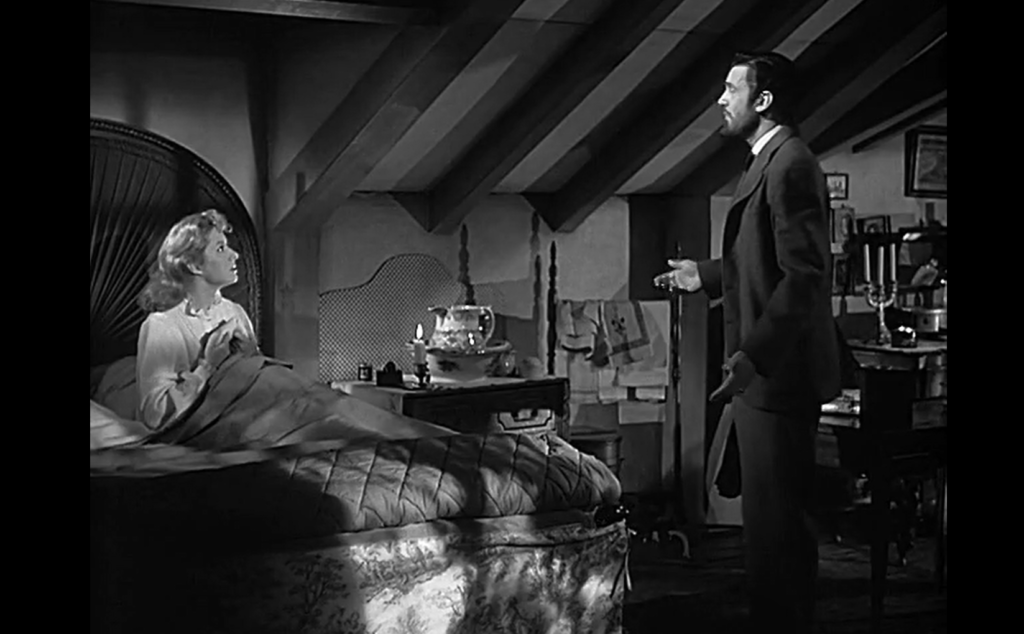
As scientists intensely committed to their craft, they are quite happy viewing their arrangement as a practical one — though the screenplay eventually shows the depth of love that emerges through their happy and productive union (including the birth of two daughters).
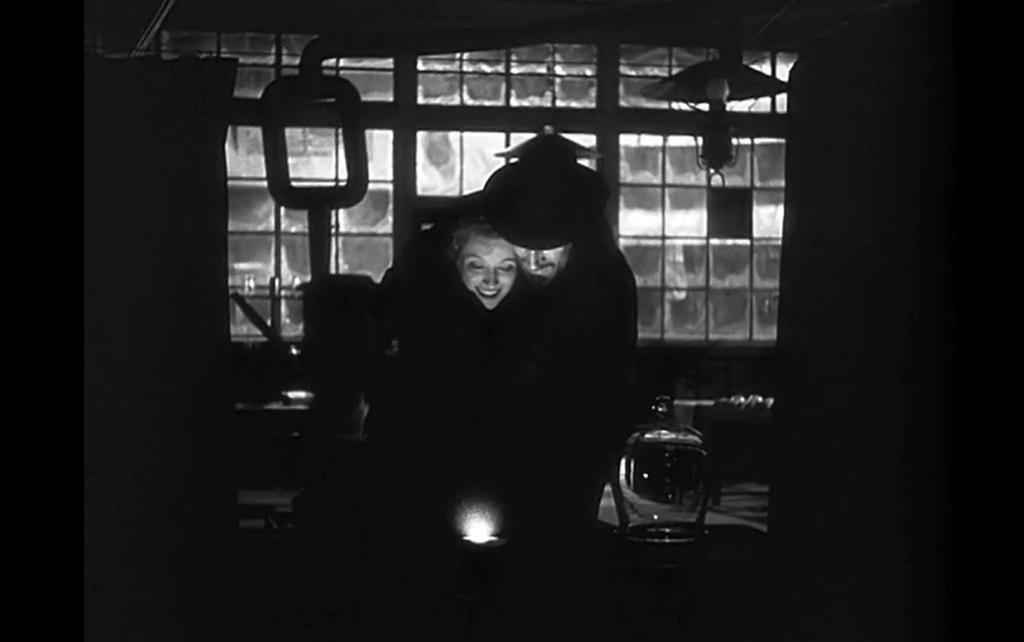
Meanwhile, it’s to the screenplay’s immense credit that lines like, “All right, then — radium won’t be separated from barium.” are authentically interesting (and comprehensible to lay audiences). We watch in eager anticipation as Marie gradually comes to understand (with help from Pierre) the next steps she must take to uncover and isolate radium — then eventually learns about the harm she’s unintentionally caused herself due to so much exposure, but decides it’s worth the risk to continue (albeit with more protections).
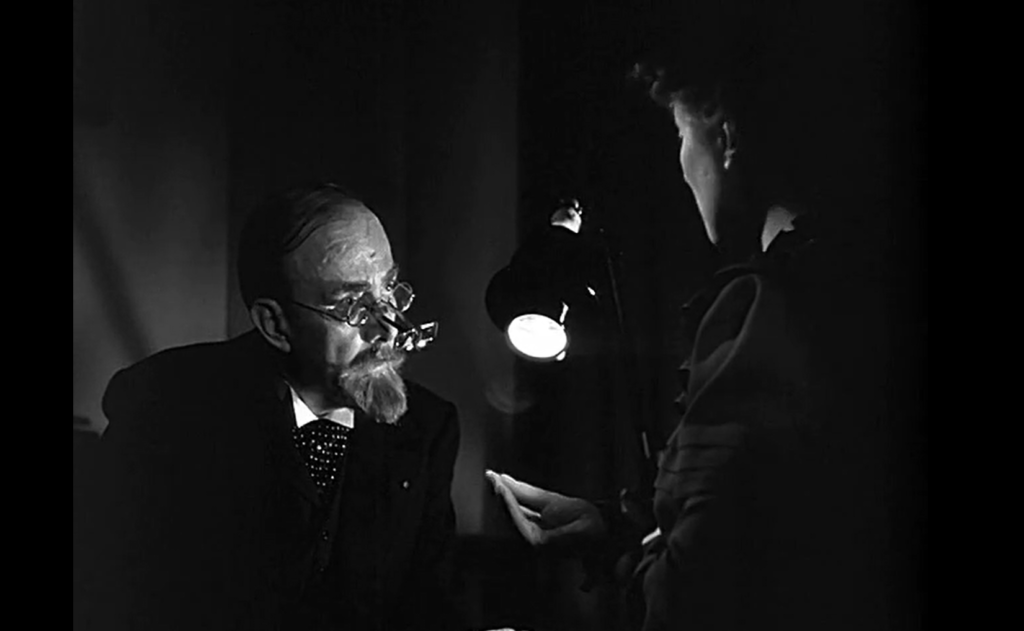
The movie is atmospherically filmed throughout (by director Mervyn LeRoy and DP Joseph Ruttenberg), making it a visual treat as well.
Redeeming Qualities and Moments:
- Greer Garson as Marie Curie

- Walter Pidgeon as Pierre Curie
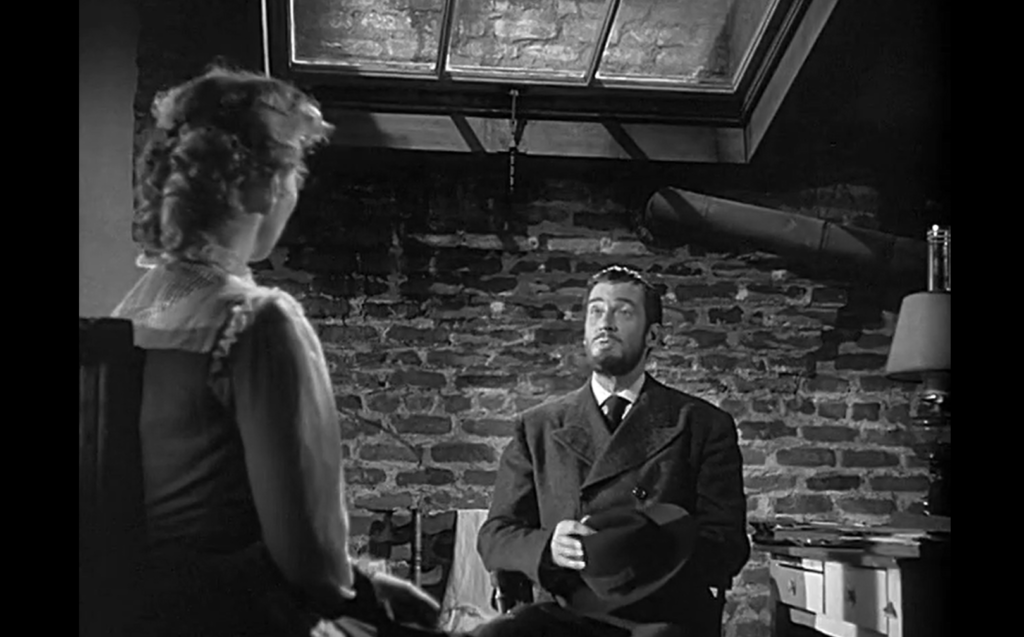
- Atmospheric cinematography
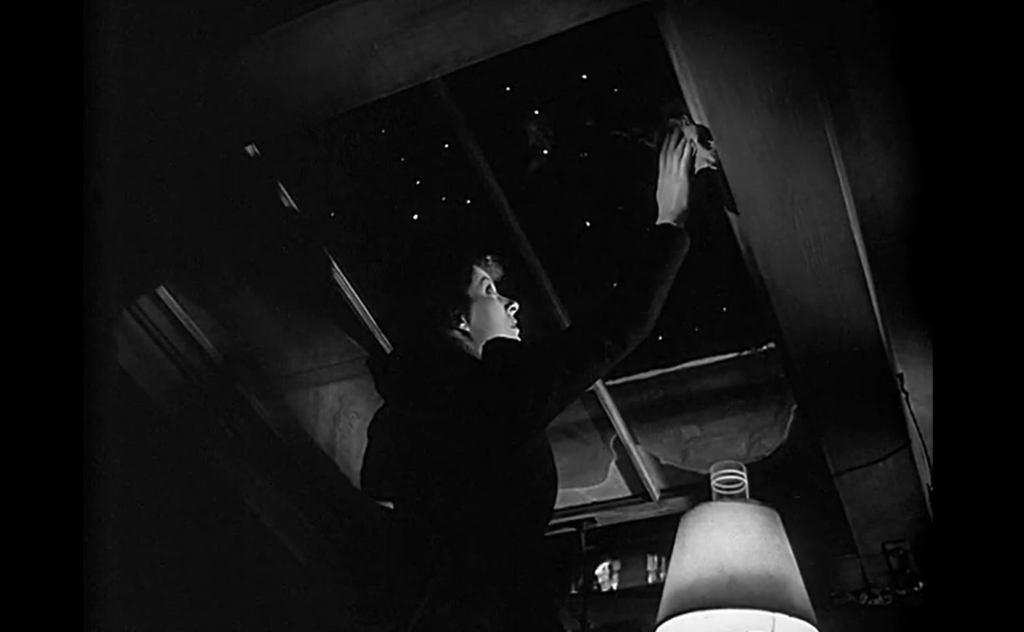
- A meticulously told tale of scientific inquiry, rigor, and suspense
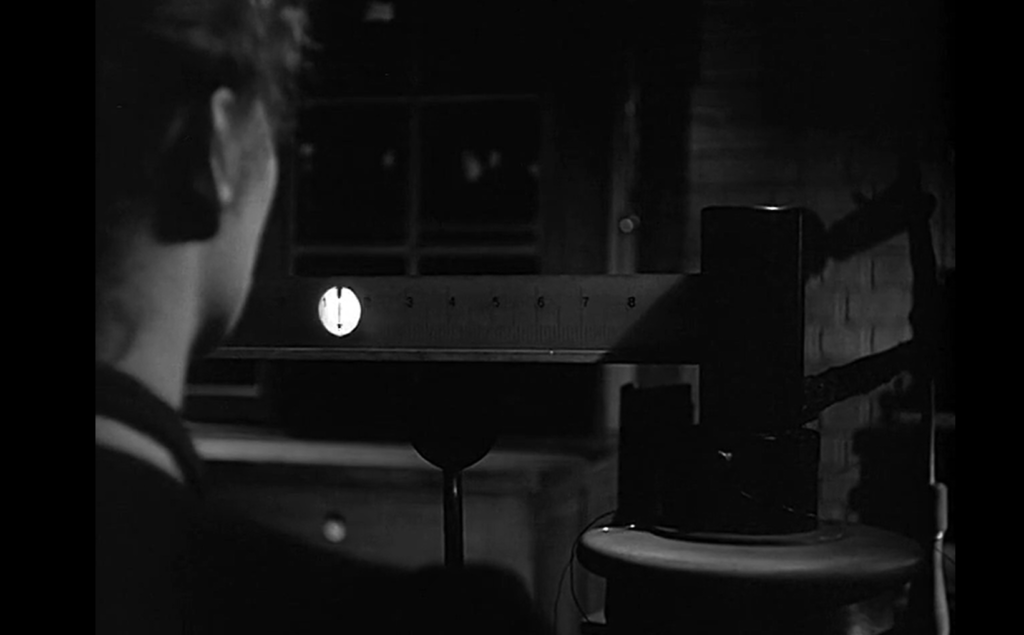
Must See?
Yes, as a powerful biopic and for the lead performances.
Categories
- Noteworthy Performance(s)
Links:
|
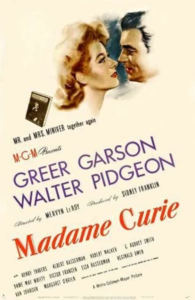







One thought on “Madame Curie (1943)”
First viewing (12/10/14). A once-must for the lead performances and the subject matter. As per my post in ‘The ’40s-’50s in Film’ (fb):
“Look for the clear light of truth…”
‘Madame Curie’ (1943): I’d not seen this before. As a kid, even without Turner Classic Movies, ‘Mrs. Miniver’ was shown on tv a number of times (as I recall) but I don’t recall a screening of ‘MC’. (Greer Garson and Walter Pidgeon made 9 pics together, btw.) Biopics were popular in the ’40s. But one would have to do a lot of research (as opposed to now, when we can quickly know) to see how ‘romanticized’ most of them are. Re: ‘MC’, Wikipedia tells us that, though it is “heavily fictionalized”, “the plot managed to adhere to the facts more than most biopics of the 1930s and 40s.” Hmm…how was that accomplished?, one wonders. At any rate, we keep our grain of salt handy and try to enjoy the film anyway. (One of my fave sequences in Woody Allen’s ‘Zelig’ shows Zelig’s story being made into a film, and very obviously romanticized – very amusing.) I know nothing of physics – but the middle of the film (the discovery of radium) seems compelling nevertheless. Overall, the film is a tad ponderous but respectful, in its ‘prestige picture’ way. Garson and Pidgeon do make an engaging and even endearing couple (whatever the real Curies were as man and wife).